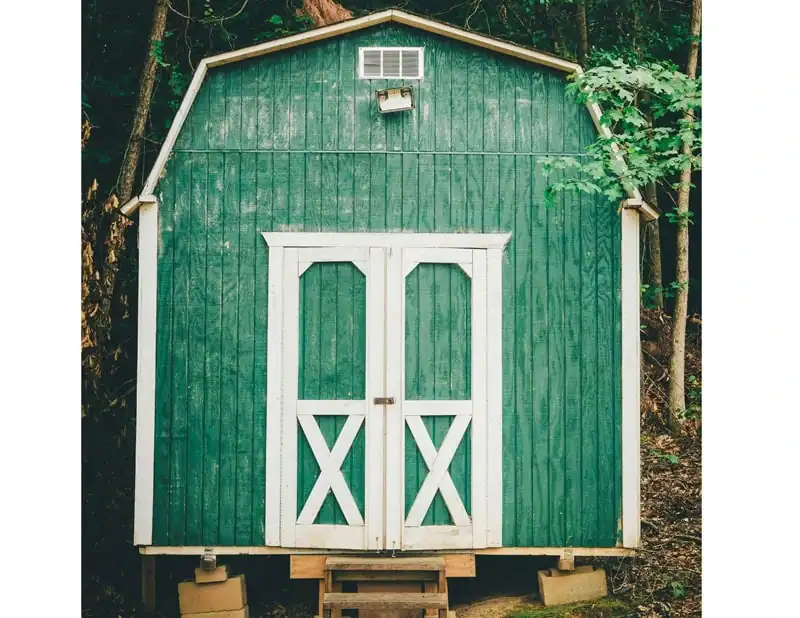Sometimes, you come across a really good deal on pool salt, but it requires either buying it in bulk, or buying it off-season. Whatever the case, you are faced with storing pool salt until you need it. Since salt really doesn’t ever ‘go bad’, why not?
While some pool owners have the ability to store their salt indoors, others are faced with limited space and must store it outside. In this article, I will address the issues around storing pool salt, the best type of container to use to the importance of protecting it from the elements.
Why is Storing Pool Salt Even an Issue?
Salt is a natural desiccant. That means that when it is exposed to the air and surfaces, it inherently wants to absorb moisture from them. While that doesn’t change the efficacy of the salt, it does create a problem in handling the salt and dissolving the salt in your pool, because it wants to clump. Sometimes an entire bag or bucket-full will turn into one big solid block. If you just need 10 pounds of salt, chopping a chuck off of the block can be an ordeal.
The most common packaging that Pool salt manufacturers use are strong and well sealed plastic bags. If those bags get a small hole in them, the exposure to air will soon turn the bag of salt into a brick of salt. This happens somewhat often because the bags are heavy and they tend to get dropped on the ground (instead of carefully placed on the ground). Bags placed directly on concrete can wick moisture up into the bag, even if the small hole is on the bottom of the bag.
Best Place to Store Pool Salt
Generally, it’s best to store pool salt indoors in a cool and dry place.
An indoor storeroom is a great place. If you are lucky enough to have a pool house, having a storage closet in there is ideal. A dry spot in your garage is probably the next best option. An outdoor shed that keeps the water out is a nice option, especially when it is not too far away from the pool. Even a spot under a porch can be converted into a better spot than just out in the elements.
In most of these outdoor storage locations, it’s still best if you use a water-resistant container such as a plastic or bin with a tight-fitting lid. This will help keep the salt dry and prevent it from becoming contaminated with other substances, like debris or rainwater. It also prevents contact directly with the ground or concrete pad of your garage, shed or pool house floor.
Best Container For Storing Salt
To store pool salt outside, a water-resistant container, such as a plastic or metal bin with a tight-fitting lid, is best. These containers are lightweight and can help keep the salt dry and prevent it from becoming contaminated.
It’s important to choose a container that is the appropriate size for the amount of salt you need to store and to ensure that the lid is secure and tight-fitting to keep moisture and other elements out. You may also want to consider using a cover or tarp to protect the container and the salt from direct sunlight and extreme weather conditions.
Most 40 pound bags of pool salt come in a plastic bag that is approximately 20″ x 15″ x 4″. So if you used a nice sturdy container like a Rubbermaid Roughneck 14 gallon tote, which the manufacturer provides dimensions of 23.875” x 15.875” x 12.25” – you could probably get 3 bags in there. Of course, it now weighs 120 pounds, so you can’t really move a full toter easily and stacking toters might smash the toter on the bottom. If you have more than three bags to store, you probably want to find a location where you can arrange your toters side-by-side.
Rubbermaid storage bins are easily my favorite when storing heavy items or when needing a really sturdy bin that can safely be stacked. I also like how the lids for these bins are interchangeable between other Rubbermaid bins with different volumes. The dimensions LxW dimensions have stayed uniform for years, so these work with all my existing Rubbermaid bins. Link takes you to a package of 6 bins + lids.
Ideally, you will want to keep your pool salt stored out of direct sunlight, either in a shed or under a porch.
Can You Use Desiccants to Keep Pool Salt Dry?
A well made plastic toter with a tightly sealing lid will keep water from getting into your salt, but most toters are not going to be completely air tight.
Desiccants are substances that absorb moisture from the air. As mentioned above, salt is also a desiccant, so we are looking for substances that are even better at absorbing moisture.
Some common desiccants used for this purpose include:
- Silica Gel Packets
- Calcium Chloride
- Clay Beads
By placing desiccants in the container with the pool salt, you can help absorb any moisture that may enter the container, preventing the salt from becoming clumped or contaminated. This is particularly important if you are storing the salt in a damp or humid environment.
It is worth noting that desiccants can assist in keeping pool salt dry, yet should never be used as a substitute for the correct storage techniques.
Also, it’s important to remember to remove the desiccants before using the salt in your pool, as they may affect water chemistry if added directly to the pool. By using desiccants in combination with proper storage practices, you can help ensure that your pool salt remains in good condition and is ready for use in your swimming pool.
Can I Store Pool Salt with Other Pool Chemicals?
You can store pool salt near other chemicals as long as each container is properly labeled and kept in a cool, dry place away from direct sunlight. Be sure to keep the lids on tightly to prevent any potential spills or leaks. By following these storage guidelines, you can help ensure your pool salt and other chemicals stay safe and effective.
Labeling Pool Salt
I like to write the date of purchase on each bag using a permanent marker. That way I know which is the oldest bag instead of guessing – that’s the one I will use first.
Storing Partial Bags of Pool Salt
Fairly often, I will have a partially used bag of salt left over. Despite my best storage attempts, partial bags tend to clump into a solid brick of salt. Instead of dealing with that later, I find that it is better to pour the leftover salt into a number of gallon sized zip-top bags. The freezer variety tend to have thicker plastic and tighter seals, so I pick those. When it comes time to use the salt, now you have smaller and more manageable salt bricks that dissolve faster.
Table of Contents
Featured Photo by Osarugue Igbinoba.
Looking for information about how to select the optimum salt for your pool? See Is All Pool Salt The Same? Understanding the Differences. If you are trying to find a use for a partial bag of pool salt, you might like this idea: Breaking the Ice: How Pool Salt Can Melt Ice On Your Driveway.








